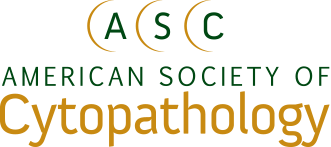Cytopathology is the subspecialty of pathology dedicated to the study and diagnosis of human disease manifested at a cellular level in tissues (1).
What does a cytopathologist do?
Cytopathology is a diagnostic technique that examines cells from various body sites to determine the cause or the nature of disease. The first cytopathology test developed was the Pap test, which has been widely utilized in the last 50 years for screening and diagnosing of cervical cancer and its precursors. The Pap test is considered the most successful screening test in medical history.
Since the development of the Pap test, the practice of cytopathology has expanded to include samples from nearly all body sites. Cell samples are taken for analysis as part of many diagnostic tests such as bronchoscopy or cystoscopy. In addition, nearly any tissue mass can be sampled and diagnosed by fine needle aspiration biopsy. In this procedure, cells are aspirated from masses just below the skin in the doctor’s office or during a radiologic examination. This approach allows diagnosis of a lesion with minimal discomfort to the patient and guides the primary physician in the next steps in patient follow-up.
Cytopathologists maintain a patient-centered approach by performing fine needle aspirations with on-site adequacy assessment in collaboration with radiologists and primary care physicians.
Cytopathologists examine cells that have been exfoliated (shed), scraped from the body or aspirated with a fine needle. Cell specimens are processed into slides and examined microscopically for the diagnosis of cancer, precancerous conditions, benign tumors and some infectious conditions. The test results are communicated to the primary physician for medical or surgical treatment and follow-up with patients (2)
How to become a cytopathologist?
Cytopathologists are medical doctors who have completed a four-year pathology residency program; many cytopathologists spend an additional year of training in an approved fellowship program. They are responsible for review and interpretation of cytopathology tests (2).
Sources

American Society of Cytopathology
cytopathology.org
100 W 10th St
Ste 605
Wilmington, DE 19801
(302) 543-6583
Contact form

College of American Pathologists
cap.org
325 Waukegan Rd
Northfield, IL 60093
(800) 323-4040 (U.S.) or +1 847-832-7000 (International)
Contact form